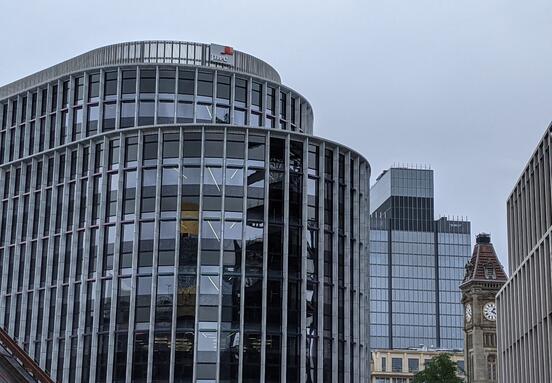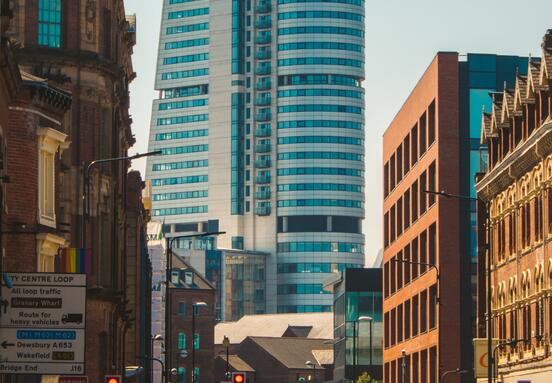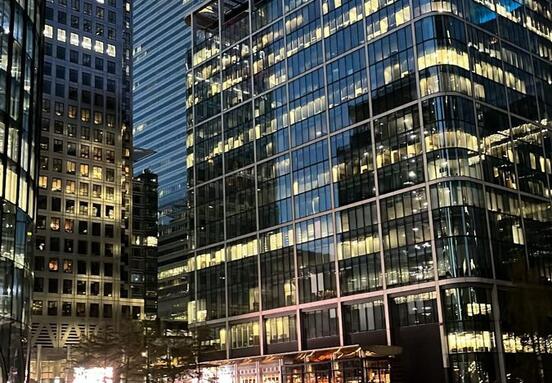London’s commercial property market experienced the strongest rental growth in 2014 and is expected it to stay in the lead over the next 12 months, according to a new outlook report.
The recovery in the UK economy combined with low levels of development means that the balance between demand and supply is now swinging in favour of landlords, the report from Schroders also says.
Risks to the positive outlook include the possibility that UK economic growth is much weaker than forecast, so that the upswing in rents stalls rather than accelerates.
‘While rental growth outside London is patchier, some regional markets are definitely coming out of hibernation. Given a reasonably high yield and a further rental growth as the economy improves, we expect that next year will see another solid performance from UK commercial real estate,’ said the firm’s head of real estate Duncan Owen.
The report says that 2014 has been a good year for UK commercial real estate and unleveraged total returns are likely to be close to 20%. Most of this year’s performance has been driven by a favourable fall in property yields, as investors seek income.
‘Looking ahead to 2015 we expect that total returns will remain in double figures, but that rental growth will make a larger contribution. The recovery in the economy combined with low levels of development means that the balance between demand and supply is now swinging in favour of landlords and we anticipate that rental growth will accelerate,’ explained Owen.
In the office sector, the emergence of central London as a powerhouse for international accountancy, law, media and technology companies has pushed vacancy rates back down to pre-crisis levels, not just in the prime locations of the City and West End, but also in less established areas such as Farringdon, Kings Cross and the South Bank, the outlook explains.
‘In previous cycles this squeeze on space and upswing in rents would have triggered a big increase in development and encouraged companies to move to cheaper offices in outer London, or other cities. However, so far we have seen relatively little new office building in central London, partly because stricter capital adequacy rules mean that banks are now less willing to fund projects and partly because competing residential schemes are often more profitable,’ Owen pointed out.
‘Moreover, central London now has such a deep pool of highly qualified labour that some companies are even re-locating to the centre from outer London or the wider South East, even though rents and business rates are more expensive,’ he added.
Similarly, the report says that retail rents in many parts of London are rising on the back of strong population growth. There are also an increasing numbers of young professionals who choose to live in inner London rather than copy their parents and move to the suburbs. This is leading to the rapid gentrification of areas such as Brixton, Hackney and New Cross which were previously relatively poor.
While rental growth outside London is patchier, some regional markets are definitely coming out of hibernation, the report also says. For example, in Manchester the office sector stands out as the strongest of the big regional cities, thanks to the success of its professional services. ‘In addition, we are also seeing good demand for office space in Bristol and Edinburgh and certain smaller markets such as Aberdeen, Brighton, Cambridge and Reading with strong local economies,’ said Owen.
In the industrial market, rents are now rising by 2% across the South East and Midlands and the report says that part of this is due to a cyclical upturn in demand from traditional occupiers such as builders’ merchants, but part is also due to the rapid growth in parcels, driven by online retail.
‘However, we remain sceptical about the prospects for a widespread recovery in retail rents outside London. Although total retail sales are now increasing quite quickly, most of the growth is online and the latest wave of bank branch closures as people convert to mobile banking is a reminder of the structural challenges facing retail property,’ Owen pointed out.
‘In general, the only parts of the sector we favour are convenience stores, which are benefiting from the switch to small basket shopping and retail warehouses, which provide retailers with efficient and affordable space,’ he added.
As far as the investment market is concerned, the firm thinks that the current level of the Investment Property Databank (IPD) All Property Index initial yield at 5.5% at the end of October 2014, represents fair value relative to other assets.
The report identifies three main risks around this outlook. The first is that UK economic growth is much weaker than forecast, so that the upswing in rents stalls rather than accelerates. The second is that over exuberant investors buying in the market push down the All Property yield to under 5% by the end of 2015 and the third is the uncertainty which would be generated if the next Government decides to hold a referendum on European Union membership in 2017.
‘That could be quite damaging, particularly for London. Approximately half of central London offices are owned by foreign investors and the flipside of London’s highly qualified, cosmopolitan workforce is that it is quite mobile and could leave relatively easily,’ said Owen.
‘Overall, and given a reasonably high yield and a further rental growth as the economy improves, we expect that next year will see another solid performance from UK commercial real estate. The latest Investment Property Forum (IPF) Consensus Forecast suggests total returns of between 10 % and 12% in 2015,’ he concluded.
www.propertywire.com







